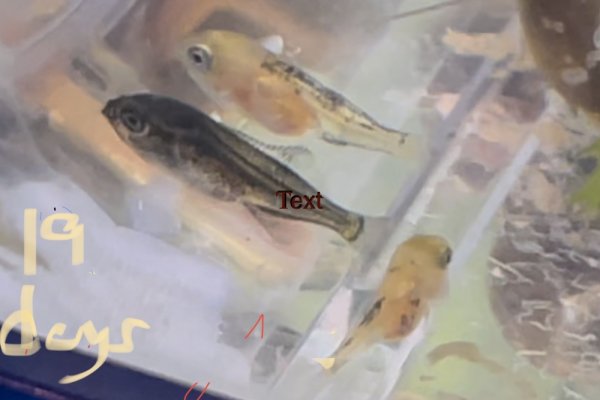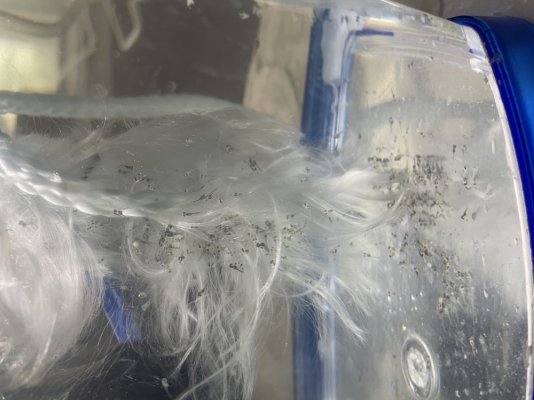Aiken has the picture of the eggcrate but it's usually found in the ceiling tile aisle of places like Lowes or Home Depot. There's a 1/4" and a 1/2" hole tile but either will do since you will need to use window/patio screening around it the keep anything from getting in or getting out. The only thing you want passing through the divider is water.

Just make sure there is aeration on both sides of the divider and that the Angels are not on the side with any overflow filters or canister filter outflows. You won't need filtration on both sides since the water should be flowing into the 2 sections and the aeration should help keep the water moving.
The eggcrate is easy enough to saw with a hack saw, dremel tool or any fine toothed saw blade. The screening doesn't need to be mosquito or insect proof screening so that there is better water flow through it. Regular old window screening is fine.

Hello fellow fish people!
Well it’s day 10 after the last little spawn and my experiment learning how to raise these little ones continues. Thanks for all the advice so far!
To update:
This is the best I have done so far ( since starting in August 2022), getting some of the fry to the free swimming stage yesterday. Yesterday -for the first time -I have seen them eat the brine shrimp. Plump little orange bellies on a few of them, so I am hopeful.

even if I get just one to mature, it is better than the horrible failures before.
It’s fascinating that the fry group that did the best was not the jar reared, but the ones in the little guppy hang-on breeding box! Those I found hatching on day4- the day after I bubbled off majority of the eggs off the Anubia leaf. I was going to throw out the last of the eggs, but a spied 5 little wigglers left among a bunch of white eggs and put them in the guppy box. They are doing the best!
I received tiny “Walter worms” in the mail just in time, and don’t know can’t tell if they helped. He also included some dry stage 1 feeder food, so I put some in. Cleaned it up after a while, and observed. 1 wouldn’t eat and I found him dead this morning, the others swimming happily.
Still not sure if it is poor technique or weak genes. I have gotten an acrylic divider from Amazon ( I’m not very handy with a hack saw) and have mom and dad isolated on the low flow side of the 75 gallon tank. She Should spawn this coming weekend. I don’t know what it is about Saturday afternoon, but that’s usually her time.

I am going to let them handle the eggs this time to give myself a break.
Last time I tried, though, they fungused over quickly - fanning was lax. Usually they really seem so interested and defend the eggs nicely.
Any tricks there? Or just let them keep trying for a few months? I’m in no hurry.
I also bit the bullet and ordered from a breeder a mated pair from discusUSA- a pair of lilac points. They will be here on Feb 2 and I have a tank set up just for them. Hopefully they will educate me. The breeder said -of course they are closely related, but all pure breeds are, so doesn’t think my issues are genes with my black male and white marble female.
Who knows? I have no idea if they are related because I didn’t buy them-I obtained them as adults from the person who bought them from a LFS and was moving away.
I am committed to getting success whatever it takes, and will continue to try as many ideas as you all have until life finds a way.
Thanks again for all the input,
Rebecca



 even if I get just one to mature, it is better than the horrible failures before.
even if I get just one to mature, it is better than the horrible failures before.


